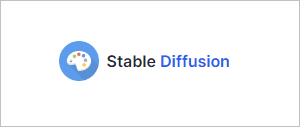Stable Diffusion

Released on August 22, 2022, Stable Diffusion is a deep learning, latent diffusion model that utilizes AI (artificial intelligence) to generate images. More plainly, it's a program that uses text-to-image communication to create illustrations. Like other AI-based models like ChatGPT, Stable Diffusion accepts prompts from users. However, instead of answering a question or providing an outline, it visually interprets the text.
In addition to producing images, Stable Diffusion can substitute portions of pre-existing images and enlarge them. Adding or substituting elements in an image is called inpainting, while enlarging or supplementing an image is known as outpainting. These procedures can modify any image, regardless of how the original was created.
Stable Diffusion was featured as a top term of 2022.
How does Stable Diffusion work?
Stable Diffusion works by repeatedly applying a diffusion process to an image. During each iteration, the software calculates a diffusion coefficient using information about the image's local properties, such as its edges and gradients. This coefficient governs the intensity and direction of the diffusion, enabling the algorithm to fine-tune the degree of smoothing applied to the image.
Then, the diffusion process continues by redistributing pixel values based on nearby contextual information. By diffusing pixel values in regions incrementally, the algorithm effectively reduces noise. This discriminating, smoothing approach aids in retaining the finer details of an image and prevents any blurring or loss of crucial features.
Stable Diffusion example
The following image was generated using the prompt: "Haunted house painting in a frame."

Artificial intelligence terms, Blur, Gradient, Increment, Internet terms, Machine learning, Neural network, Software terms
